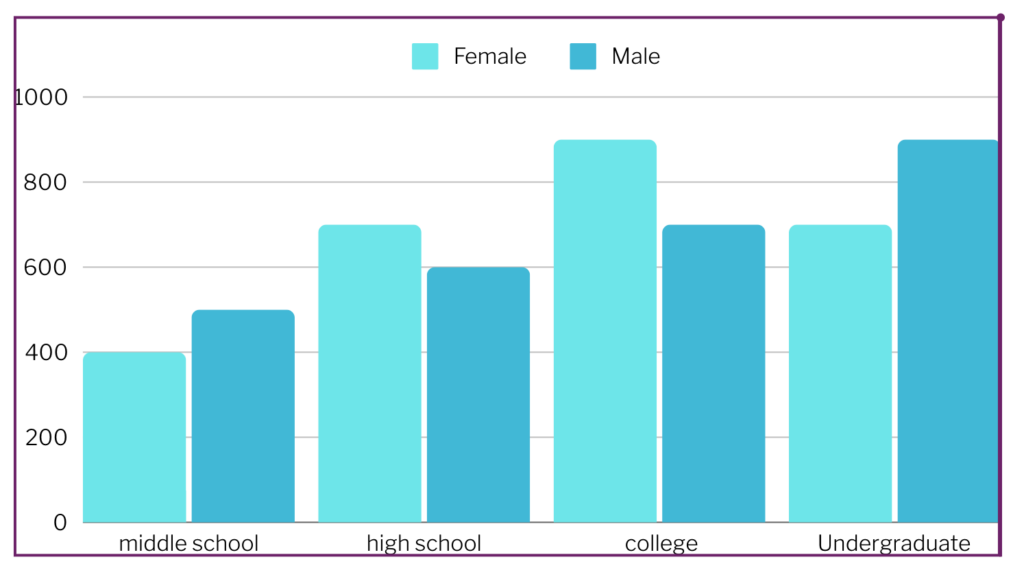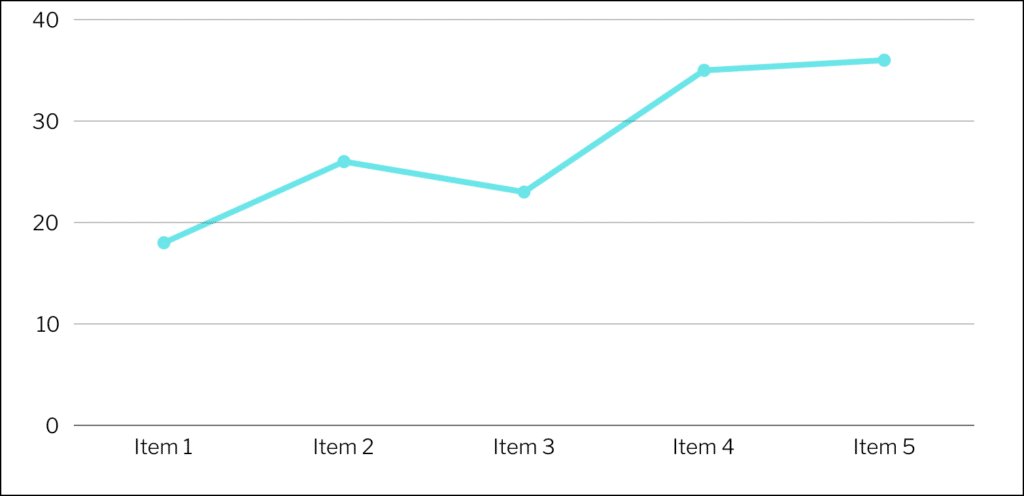When it comes to creating charts and diagrams to represent stats and data, most of us are often intimidated by the thought that it requires sophisticated tools and advanced technology and in sometimes graphic design knowledge.
Well, that used to be the case! Now a wide variety of EdTech tools make it super easy for anyone including those with the minimum design knowledge (like me) to create beautiful and professionally designed charts and graphic representations.
Several AI assistants currently support the creation of visual representations. Simply craft a detailed prompt with your stats and ask the bot to provide a visual representation. Or, better yet upload a CSV file and let the AI bot extract your data and help you design your chart. However, in today’s post, I am introducing you this simple and easy tool in Canva which allows you create beautiful charts.
As you all know, since its introduction a few years ago, Canva has become the mecca of accessible design tools, empowering educators, students, and professionals to create visually appealing content without needing advanced design skills. Canva’s intuitive interface, drag-and-drop features, and a massive library of templates have transformed how we approach design.
Given the educational value of this platform, I deemed it important to devote a whole section here in Educators Technology covering the different features Canva provides. And no, I am not affiliated in any shape or form with Canva. I simply recognize its potential as an invaluable tool for educators.
Creating Charts Using Canva
To start creating your charts on Canva, go ahead and open a document in Canva Doc. Once there click on the + icon or type in / (slash) and select the type of chart you want to create. As of writing these lines, Canva supports three types of charts:
Pie chart: Good for showing proportions and percentages, making it ideal for visualizing parts of a whole, such as survey results or demographic data.

Bar chart: Best for comparing quantities across categories, like grades by subject, class participation, or resource usage.

Line Chart: Perfect for displaying trends over time, such as student progress, attendance patterns, or performance metrics.

Simply select the chart type you are interested in and fill in your data using the table on the left hand side. There are two ways to provide your data: you can either upload a file with your data and let Canva extract and use the data to create a visual representation for you. Files supported for upload include: CSV, TSV, and XLSX. You can also use the Google Sheets app in Canva to directly import your Sheets file into Canva Doc.
The second way is to type in your data manually. This can be cumbersome especially if you have too much data to input, but it works well for smaller datasets or when making quick edits. Simply enter your values into the table provided, and Canva will automatically update the chart to reflect your data.
Once your chart is ready, you can customize it further. For instance, you can change the colors, fonts, labels, and even add animations if you’re creating a presentation. In fact, this flexibility and easy of use is one of Canva’s strengths over other design tools.
In few minutes, you will be able to effortlessly generate a professionally designed chart that you can directly include in your documents or presentations.
Here is a video tutorial I recorded explaining how to use Canva to create beautiful charts:
Using Canva Charts Generator in Your Teaching
When it comes to using charts in your teaching, the sky is the limit. There are various ways to include them in your instructional practice. For instance, you can use Canva chart generator to easily create materials to enhance your lesson plans. Instead of providing dry data, use graphic charts to bring life to your data and to increase students engagement and motivation.
You can also use it to visually represent data to boost students’ understanding. Research has proven time and again that visuals tend to enhance memory retention and boost comprehension. For example, you can design charts to display students progress, illustrate complex concepts, or compare historical events, scientific phenomena, or literary themes.
Another way to use charts in your teaching is by creating charts that break down survey results, poll outcomes, or class performance metrics. You can even use them to represent steps in a process, like the scientific method or the writing process.
Related: Best Canva AI Features
Final thoughts
As I mentioned earlier, visuals like charts are important assets to use in your teaching. They boost students engagement and enhance their understanding by making abstract data more concrete and relatable for students which helps them see patterns, relationships, and trends more clearly. Canva is good option to try to out to help create charts easily and quickly. Go ahead and give it a try and share with us your feedback.
The post Canva Charts Generator Tutorial appeared first on Educators Technology.
